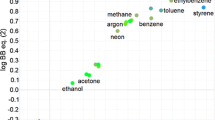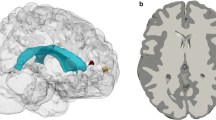Abstract
Purpose. The aim of this study was to evaluate the ability of anin vitro method of tissue distribution to accurately predict total water andextracellular aqueous spaces using marker compounds urea and inulin.
Methods. Slices (50–200 mg) of all the major tissues in the rat wereincubated with Hanks/HEPES pH7.4 buffer containing 14C-urea and3H-inulin for 2 h at 37°C. Tissue weight was noted before and afterincubation and the tissue-to-buffer ratios determined.
Results. 14C-Urea Kp estimates were generally greater than total tissuewater due to tissue swelling, which varied widely among the tissues,up to 41% in muscle. In most cases, Kp values were much closer toin vivo values after correcting for the 14C-urea in the imbibed media(Kpcorr). The method was able to distinguish between 14C-urea and3H-inulin Kp values and indicated that inulin occupied a smaller spacethan urea, which for the majority of tissues corresponded to theextracellular space.
Conclusions. The Kp corr values for14C-urea and Kp for 3H-inulin wereconsistent with total tissue water and extracellular space for the majorityof tissues studied, indicating their suitability as marker compounds forchecking the viability of this in vitro method for estimating tissuedistribution.
Similar content being viewed by others
REFERENCES
D. E. Leahy, R. Duncan, H. J. Ahr, M. K. Bayliss, A. G. de Boer, F. Darvas, J. H. Fentem, J. R. Fry, R. Hopkins, J. B. Houston, J. Karlsson, G. L. Kedderis, M. K. Pratten, P. Prieto, D. A. Smith, and D. W. Straughan. Pharmacokinetics in early drug research. The report and recommendations of ECVAM workshop 22. ATLA 25:17–31 (1997).
T. Iwatsubo, N. Hirota, T. Ooie, H. Suzuki, and Y. Sugiyama. Prediction of in vivo drug disposition from in vitro data based on physiological pharmacokinetics. Biopharm. Drug Disp. 17:273–310 (1996).
M. Rowland. Physiologic pharmacokinetic models and interanimal species scaling. Pharmacol. Ther. 29:49–68 (1985).
V. Fiserova-Bergerova and M. L. Diaz. Determination and prediction of tissue-gas partition coefficients. Int. Arch. Occ. Env. Health 58:75–87 (1986).
M. L. Gargas, R. J. Burgess, D. E. Voisard, G. H. Cason, and M. E. Andersen. Partition coefficients of low-molecular-weight volatile chemicals in various liquids and tissues. Toxicol. Appl. Pharm. 98:87–99 (1989).
J. E. Murphy, D. B. Janszen, and M. L. Gargas. An in vitro method for determination of tissue partition coefficients on non-volatile chemicals such as 2,3,7,8-tetrachlorodibenzo-p-dioxin and estradiol. J. Appl. Toxicol. 15:147–152 (1995).
J. M. Gearhart, G. W. Jepson, H. J. Clewell, III, M. E. Andersen, and R. B. Conolly. Physiologically based pharmacokinetic and pharmacodynamic model for the inhibition of acetylcholinesterase by diisopropylfluorophosphate. Toxicol. Appl. Pharmacol. 106:295–310 (1990).
R. N. Upton, L. E. Mather, and W. B. Runciman. The in vitro uptake and metabolism of lignocaine, procainamide and pethidine by tissues of the hindquarters of sheep. Xenobiot. 21:1–12 (1991).
H. M. Pappius and K. A. C. Elliott. Water distribution in incubated slices of brain and other tissues. Can. J. Biochem. 34:1007–1022 (1956).
S. Varon and H. McIlwain. Fluid content and compartments in isolated cerebral tissues. J. Neurochem. 8:262–275 (1961).
P. Poulin and K. Krishnan. Molecular structure-based prediction of the partition coefficients of organic chemicals for physiological pharmacokinetic models. Toxicol. Meth. 6:117–137 (1996).
P. Poulin and F.-P. Theil. A Priori prediction of tissue:plasma partition coefficients of drugs to facilitate the use of physiologically-based pharmacokinetic models in drug discovery. J. Pharm. Sci. 89:16–35 (2000).
R. S. Bourke and D. B. Tower. Fluid compartmentation and electrolytes of cat cerebral cortex in vitro· I. Swelling and solute distribution in mature cerebral cortex. J. Neurochem. 13:1071–1097 (1966).
W. M. Sperry and F. C. Brand. Absorption of water by liver slices from “physiological” saline solutions. Proc. Soc. Exp. Biol. (New York) 42:147–150 (1939).
R. S. Bourke. Studies of the development and subsequent reduction of swelling of mammalian cerebral cortex under isosmotic conditions in vitro.Exp. Brain Res. 8:232–248 (1969).
K. Okamoto and J. H. Quastel. Water uptake and energy metabolism in brain slices from the rat. Biochem. J. 120:25–36 (1970).
S. R. Cohen. The dependence of water content and “extracellular” marker spaces of incubated mouse brain slices on thickness. Alterations produced by slicing, and fluid spaces in intact and altered tissue. Exp. Brain Res. 20:435–457 (1974).
W. Herms, and G. Arnold. Diuresis, inulin clearance, sodium reabsorption and oxygen consumption of the isolated erythrocyte¶ free perfused rabbit kidney. Bibl. Haem. 33:404–407 (1969).
A. C. Heatherington and M. Rowland. Discrepancies in pharmacokinetic parameter estimation between bolus and infusion studies in the perfused rat hindlimb. J. Pharmaco. Biopharm. 23:441–462 (1995).
S. M. Gad and R. L. Preston. In vivo prediction of extracellular and intracellular water in cattle. J. Animal Sci. 68:3649–3653 (1990).
K. F. Rothe. Fractional extracellular space and fractional water content of various rat tissues at different extracellular pH values and in uremia. Lab. Animals 13:171–174 (1979).
J. R. Stern, L. V. Eggleston, R. Hems, and H. A. Krebs. Accumulation of glutamic acid in isolate brain tissue. Biochem. J. 44:410–418 (1949).
G. E. Blakey. Tissue Kinetics for a Series of Barbiturates, in Department of Pharmacy. University of Manchester, Manchester (1995).
S. P. Khor and M. Mayersohn. Potential error in the measurement of tissue to blood distribution coefficients in physiological pharmacokinetic-modeling. Residual tissue blood 1. Theoretical considerations. Drug Metab.Disp. 19:478–485 (1991).
J. N. Allen. Extracellular space in the central nervous system. Arch. Neurol. Psych. 73:241–248 (1955).
H. S. Bachelard, W. J. Campbell, and H. McIlwain. The sodium and other ions of mammalian cerebral tissues, maintained and electrically stimulated in vitro. Biochem. J. 84:225–232 (1962).
Author information
Authors and Affiliations
Rights and permissions
About this article
Cite this article
Ballard, P., Leahy, D.E. & Rowland, M. Prediction of In Vivo Tissue Distribution from In Vitro Data 1. Experiments with Markers of Aqueous Spaces. Pharm Res 17, 660–663 (2000). https://doi.org/10.1023/A:1007565828856
Issue Date:
DOI: https://doi.org/10.1023/A:1007565828856




